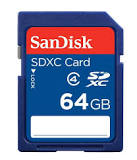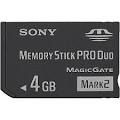Camera Components:

Viewfinder- a viewfinder is what the photographer looks through to compose, and, in many cases, to focus the picture.

- Digital shutter system- In photography, a shutter is a device that allows light to pass for a determined period, exposing photographic film or a light-sensitive electronic sensor to light in order to capture a permanent image of a scene.

- Lens- A camera lens is an optical lens or assembly of lenses used in conjunction with a camera body and mechanism to make images of objects either on photographic film or on other media capable of storing an image chemically or electronically.

Functions:
Focal Length- This determines which type of lens it is, and what subjects it will be able to photograph. Focal lengths range from just a few millimetres up to over a metre, and can be loosely grouped. Here are the different types:

Crop Factor- (Full-frame and Crop Sensor information.)
Prime VS Zoom length- A “prime” lens is one with a fixed focal length, while a “zoom” lens is one that can zoomed in and out to provide a wider range of focal lengths. Each type has its own benefits and drawbacks:
- Prime Lens: Prime lenses tend to have better optical quality than zooms, and can usually achieve a wider aperture, giving them better low-light performance.Their lack of moving parts also makes them lighter and cheaper
- Zoom Lens: The range of focal lengths offered by a zoom lens can provide more flexibility, making them suitable for a wider range of subjects. If you are a beginner, a zoom lens can be a better choice as it will allow you to experiment with a range of focal lengths to find what you like.
Focusing- Most modern camera lenses have a built-in autofocus mechanism which takes the guesswork out of getting sharp photos.
Silent autofocus is useful for macro and candid photography, where the lens sound can alert the subject and potentially ruin your shot.
Internal focusing means that the outside of the lens stays perfectly still, which can be beneficial in macro photography where any movement could scare your subject away.
Types:
Standard Lens- A standard lens is one with a mid-range focal length, typically around 50mm. They have an angle of view which is roughly the same as the angle that the human eye can comfortably view, meaning that they produce images which appear “natural” to the viewer.


Macro Lens- A macro lens is one designed especially for close-up photography. They have a different internal construction from normal lenses which gives them very good sharpness and contrast, meaning that they produce some really eye-catching photos. Typically macro photography is shot with a macro lens.


Telephoto Lens- A telephoto lens has a long focal length and provides a high level of magnification, allowing you to photograph subjects at a moderate to far distance. They tend to be bigger and heavier than other types of lens, although modern technological advances have made them more compact and easier to handle.


Wide Angle Lens- A wide angle lens is one with a short focal length. They provide an angle of view beyond that of a standard lens, allowing them to capture more of the scene in a single shot.


Extreme wide angle lenses are known as fisheye lens; these can capture around 180 degrees, making for some intriguing, almost abstract photos.


- Image sensors- An image sensor or imaging sensor is a sensor that detects and conveys the information that constitutes an image.
- F-stops- a camera setting corresponding to a particular f-number. As the f-stop increases so does the light intensity as show in the images below.

- Shutter- a device that opens and closes to expose the film in a camera.
- Aperture- In photography and digital photography, aperture is the unit of measurement that defines the size of the opening in the lens that can be adjusted to control the amount of light reaching the film or digital sensor.

Aperture has several effects on your photographs. One of the most important is the brightness, or exposure, of your images. As aperture changes in size, it alters the overall amount of light that reaches your camera sensor – and therefore the brightness of your image. A large aperture (a wide opening) will pass a lot of light, resulting in a brighter photograph. A small aperture does just the opposite, making a photo darker.
Depth of field- Depth of field is the amount of your photograph that appears sharp from front to back. Some images have a “thin” or “shallow” depth of field, where the background is completely out of focus. Other images have a “large” or “deep” depth of field, where both the foreground and background are sharp.

- Memory:
There are many different varieties of memory storage cards. For beginners, storage is the most important factor compared to professionals who prioritise quality over quantity.
Memory cards are used in cameras and camcorders, mobile phones, televisions and consoles.
The main types currently available include SD, Memory Stick and CompactFlash.
Secure Digital

Memory Card

CompactFlash

Smart Media

- Internal storage: A feature called Adoptable Storage allows the Android OS to format an external storage media as a permanent internal storage. Internal storage is used mostly on mobile phones with storage e.g photos and apps.
- File Storage- file formats (RAW, Jpeg, TIF)- hard drives, cloud, memory cards (File format Post.)
Tungsten: Continuous light (always on) – bulb.
Reflectors: Used to bounce or reflect light. (Reflector Information.)

Soft boxes: A frame with a cloth covering used to diffuse the light from a flash or floodlight. (Soft Box further information.)

Strobes: A device used to produce regular flashes of light. (Further information on Strobes.)

Camera Support:
-
Tripod- a three-legged stand for supporting a camera or other apparatus.

-
Monopod- is a single staff or pole used to help support cameras.

-
Hand-held Devise


-
Drone





Leave a comment